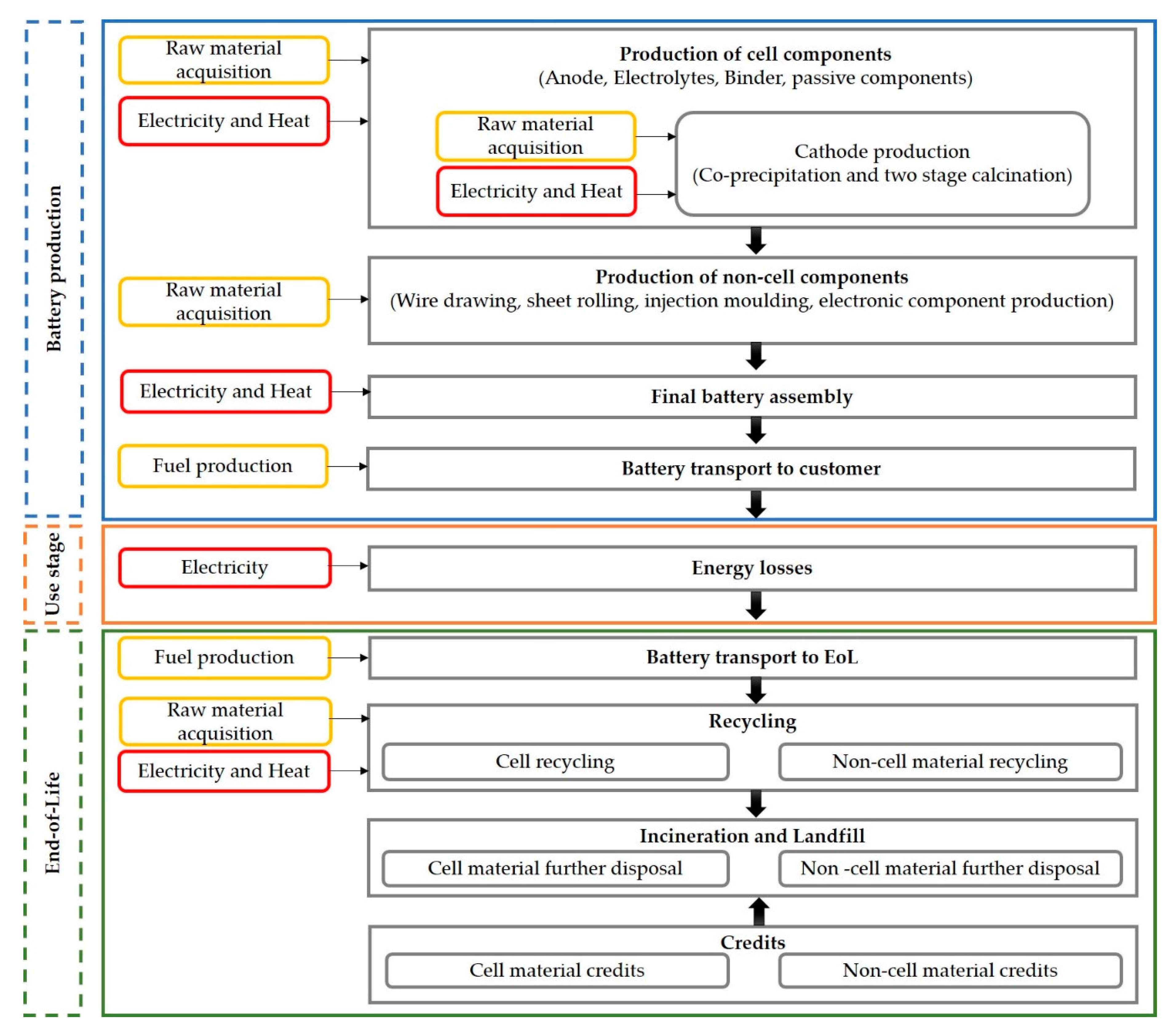A. Accardo, G. Dotelli, M.L. Musa, E. Spessa
Applied Sciences, 11(3) (2021), 1-32
https://doi.org/10.3390/app11031160
This paper presents the results of an environmental assessment of a Nickel-Manganese-Cobalt (NMC) Lithium-ion traction battery for Battery Electric Light-Duty Commercial Vehicles (BEV-LDCV) used for urban and regional freight haulage. A cradle-to-grave Life Cycle Inventory (LCI) of NMC111 is provided, operation and end-of-life stages are included, and insight is also given into a Life Cycle Assessment of different NMC chemistries. The environmental impacts of the manufacturing stages of the NMC111 battery are then compared with those of a Sodium-Nickel-Chloride (ZEBRA) battery. In the second part of the work, two electric-battery LDCVs (powered with NMC111 and ZEBRA batteries, respectively) and a diesel urban LDCV are analysed, considering a wide set of environmental impact categories. The results show that the NMC111 battery has the highest impacts from production in most of the impact categories. Active cathode material, Aluminium, Copper, and energy use for battery production are the main contributors to the environmental impact. However, when vehicle application is investigated, NMC111-BEV shows lower environmental impacts, in all the impact categories, than ZEBRA-BEV. This is mainly due to the greater efficiency of the NMC111 battery during vehicle operation. Finally, when comparing BEVs to a diesel LDCV, the electric powertrains show advantages over the diesel one as far as global warming, abiotic depletion potential-fossil fuels, photochemical oxidation, and ozone layer depletion are concerned. However, the diesel LDCV performs better in almost all the other investigated impact categories.

